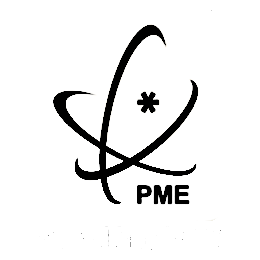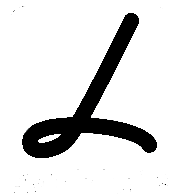KEVLAR®
An exceptional protection against cuts and heat
Kevlar ® is a para-aramid fiber by DuPont of Nemours that combines lightness with high tenacity. With identical weight, Kevlar ® is five times more resistant than steel.
Characteristics:
- 3 times more resistant to the cut than cotton gloves;
- 5 times more resistant to the cut than leather gloves;
- Carbonizes between 425ºC and 475ºC;
- No melting;
- Self-extinguish (can not burn without the intervention of any fuel);
- High tolerance to heat (reduced shrinkage);
- Good chemical stability.
Strengths:
- Very soft tactile sensation;
- Confort;
- Washable;
- Dexterity.
KEVLAR ® CLEAN TM
It’s 100% continuous fiber produced by DuPont.
More mechanical resistance.
Better abrasion resistance.
No fuzz (few fibers on the surface).
Excellent behaviour after washing.
Long useful life.
ARMOR TECHNOLOGY
The Kevlar® fiber with is steel wire gives an exceptional level of protection against extreme cut risks (heavy maintenance, plates, mechanical handling, glass work, paper work). This new fiber, used to fabricate Venitex anti-cut knitting gloves, associates confort and dexterity with a high level of protection. The fiber limits even the impression of dirt and therefore increases the useful life of the glove.
KEVLAR® AND UV – The UV rays change the natural yellow appearance of Kevlar® making the fiber appear a little more decolorized. Although this colour change is accompanied of a little lost of the fibre traction resistance, the properties of the heat (flame) and mechanical resistance (cut) are not at all affected. Still we make sure to deliver the products inside little black plastic bags.
The labelling is your guarantee of having a 100% Kevlar® product:
The Kevlar® labelling that appears in the gloves or cuffs of self protection indicates that the article is in conformity with the DuPont Qualities norms. It does not substitute the mark imposed by the 89/686 directive about the IPE but it is a supplementary guarantee of benefiting of a quality product.
Demand the DuPont Kevlar® certificate: your guarantee of quality.
Your safety doesn’t have a price and contrary to the ideas generally admitted, the Kevlar ® fiber presents a better option available in the market in regard of quality/performance/price.
Even if Kevlar® fibre gloves are more expensive when you purchase it than a cotton or a leather glove, the mechanical performance and the ease of cleaning make your choice an excellent investment.
Which Kevlar® gloves we hold in stock are most adequate to answer most of the risks you may find?
- Basic, it’s your solution against cuts;
- Lined, your solution against the heat;
- Coated by PVC dots, your solution to avoid slipping;
- Coated by Polyurethane or Latex, your solution for oily or greasy environments.
Kevlar® and Nomex® are registered DuPont of Nemours and company.
DYNEEMA®
This fibre is a high tenacity polyurethane (petrochemical derivate). Their mechanical characteristics are exceptional. It’s a material proof to a huge number of chemical products, resistant to cleaning products.
Registered mark of DSM society.
POLYESTER
Invented by Dr. Alfred Caress, the first polyester fibre known by the name oh Terilene was developed in England.
Synthetic material obtained by polymerization of substances from petrochemical. Polyester has similar qualities to the polyamides; resistance, elasticity, washable. Besides this, it can be mixed (intimate mix) with wool and cotton, which compensates the fact of the polyester inability of absorb sweat.
POLYAMIDE
This fibre was present in public in 1938. Synthetic substance obtained by the phenol that constitutes the raw material of the nylon fibres. The nylon, under the nominations of nylon 6 and nylon 66, it’s the most famous of the polyamides.
Polyamide’s principal qualities:
Resistance to traction and to heat, elasticity that after deformation allows it to go back to is initial shape, fast wash and dry since they’re low water absorb, insects resistance (moths specially).
COTTON
Textile fibre constituted by silky filaments that evolve the cotton grains: it’s composed by round 94% of cellulose.
Advantages: pleasant to wear, do not irritates the skin, resistant, good absorption power and easy conservation.
LATEX AND SINTHETICS
Natural or synthetic latex (Neoprene, Nitrilo) and the PVC or Vinil are the basic raw materials used to the fabric of Ventilex and Showa gloves.
Some times mixed to optimize the resistance, and the confort, these materials complement and present a gamma of resistance to mechanical assaults, chemical or thermal that satisfies the multiplicity of the needs.
Imbued gloves
These gloves are made by immersion of the shape of a ceramic hand inside of different composition according to the type of used material. Baked inside of ovens, they suffer different finishing treatments in function of the desired characteristics.
NOT SUPPORTED:
Shape directly imbued inside of the bath.
- standard
Select a non-supported light or heavy glove for a better protection. It is convenient to observe a flocked glove or of suede cotton will give you a better confort and a better isolation.
- unique use
Select a non-supported glove in case you are looking for a bigger dexterity and a good tactile sensibility.
SUPORTED:
Imbued coated form with knitting glove of cotton, jersey or interlock.
Select a supported or stitched glove to obtain a mechanical protection of better quality and a better confort (thermic).
The advantages of a textile support: cotton knitting inside to a maximum confort in long wonks and a goos thermic isolation. Besides, it reduces the risks of allergies.
NATURAL LATEX
It’s a natural polyisuprene resulting from Heyea Brasiliensis, originated from South América (Brasil in particular), mainly cultivated today in Southeast Asia (Malaysia, Vietnam, Indonesia, Thailand…) and Africa.
The harvest is done by opening a wound in the tree (cupping) and the spilled “milk” it’s immediately mixed with ammonia to avoid the faster coagulation and turn into an unusable rubber.
It belongs to elastomers and, as any type of natural product, this latex or natural rubber contains proteins (around 1,5 to 2,5%) able to cause allergies to certain people.
SHYNTHESIS LATEX
Nitrile: polymer synthesis, the vulcanization gives you characteristics comparable to the natural latex, as well as, the numerous advantages.
The properties of this polymer proceed to the 3 monomers that enter in is composition:
Ov acrylonitrile reassures the resistance to the chemical products;
Ov butadiene contributes the malleability and the flexibility with an important role in the vulcanization;
Ov carboxylic acid gather with zinc oxide they act in the mechanical resistance of the material.
NEOPRENE
It’s an high performance synthesis elastomer obtained by polymerization of a chlorinated compose: the polychloroprene.
PVC or vinil
Thermoplastic synthesis polymer.
The specific treatments of an intern glove
Chlorination:
Wash process of latex gloves inside of chlorinated water to obtain dust free gloves. This type of finishing facilitates the wearing of the glove (velvety contact), improves the confort and reduces the allergic effect of natural latex caused by the dust.
Flakes: Finishing process by short textile fibres by application. It offers a pleasant contact and a better confort. It also facilitates the wearing and the removal of the glove and limits the sweat.
Powdering: Finishing process by powdering application (generally corn starch) to limit the sweat effects and easy the wearing and removal of the glove.



